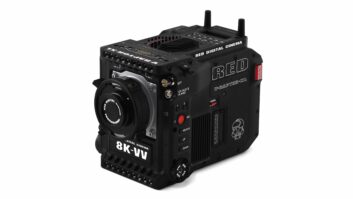Forecasting the future of TV and video is no easy task, but Deloitte was on the money when it predicted back in 2018 that online platforms would be the biggest market disruptors. The last year has seen global streaming use soar by almost 50 per cent, with Netflix alone reaching a record 200 million subscribers. And as subscription giants gain more viewers, it inevitably creates competition for consumers eyeballs with the likes of linear TV and advertising video on demand (AVoD) services.
For broadcasters, this signals that the time has come to start rapidly adjusting their models. Most are already aware of the need to better compete with digital heavyweights, especially as platforms move from content providers to producers. And, despite the enduring popularity of traditional TV, it’s clear future broadcast survival will hinge on adopting a hybrid approach that captures diverse audiences by leveraging both linear and cross-channel video.
The challenge, however, lies with determining how to make this transition effectively.
Enhanced technological capabilities will be key. But broadcasters must first balance the opportunity digital presents against the risk it poses to their business and strong linear revenues. This starts with gaining a better understanding of what embracing digital will mean.
Taking TV online: pluses and pitfalls
A key motivator for broadcasters to accelerate digital evolution also presents the greatest benefit: keeping up with shifting audience habits. Expanding digital offerings will not only help them maintain and expand viewer connections in the near-term — with 44 per cent of global audiences increasing use of connected TV devices — but also secure their long-term position in the value chain.
To retain audiences and win new users, broadcasters will have to ensure they provide a rich array of enticing and high-quality content, which will likely include developing CTV-specific network brands, as well as producing more exclusive content for over-the-top (OTT) channels, owned and operated by the brand. See for example, ITV’s decision to roll out a digital-first commissioning strategy for ITV2, ITVBe, and CITV. In turn, such efforts will call for access to sizeable funds, largely generated through AVoD revenues.
This brings us to the issue of silos. It’s long been recognised that disparate metrics and systems have created major barriers for CTV and linear ad integration. Although there has been regional progress, the industry as a whole is still grappling with the problems caused by dis-jointed approaches. This is especially true when it comes to difficulties with accurately valuing and packaging inventory on the seller side, and frustration for buyers who want amalgamated availability and comparable measurement to enable holistic campaign management.
Overall, broadcasters will need a tech set up that allows them to support linear and digital requirements. Given that conventional and CTV ads fundamentally fulfil different roles — the mass-megaphone of scheduled TV versus the more household-specific digital reach of CTV — leveraging both will enable broadcasters to better maximise their advertising appeal and revenue. Additionally, they hold valuable assets that will allow them to achieve that effectively, including quality content and greater audience insight.
Unlocking possibilities requires data savvy
Within its 2030 predictions, Deloitte laid out a variety of scenarios for the future of TV and video, but the general theme was the need to up-scale digital ability. Specifically, it highlighted that broadcasters keen to avoid becoming simply suppliers for big digital players would mean dialling up transformation on multiple fronts: evolving into platforms with identifiable digital brands, building smarter infrastructure and skills, and adding services such as targeted ads and recommendations.
In part, achieving this will involve closer collaboration across the industry, particularly with all-IP network operators, working in the same regional markets. But it will also require better use of data to inform robust business modelling, provide tailored user experiences and suggestions, and facilitate delivery of highly relevant and profitable ads.
Broadcasters are already well-placed when it comes to data accessibility, arguably better than many other digital players struggling with ongoing third-party cookie deprecation. Thanks to their direct audience relationships, they have a better chance of acquiring registrations and obtaining consent from logged-in users to collect and tap data — allowing them to amass rich pools of authenticated and ever-replenishing first-party insight. Typically, what’s missing is the means to harness and apply that information.
Developing a multi-purpose toolkit
Broadcasters need a multi-faceted game plan for implementing an efficient and versatile model. Integral to doing so will be building their own hyper-charged toolkit, complete with the right tech for consistently retaining their competitive edge, as well as meeting user and advertiser expectations. The most essential ingredients include:
- Streamlined delivery and access
With the ability to buy media conveniently a rising priority, an advanced API is vital for bringing linear and digital inventory under one roof. Equally important, however, is optimised ad decisioning — where buyers can select ad placements that will hit their desired frequency goals, regardless of variations in broadcast ratings. Value path optimisation is also important to ensure every link in the chain provides maximum value in terms of performance and transparency, with the extra bonus being that the removal of surplus supply-side platforms (SSPs) will reduce complexity and encourage closer relationships.
- Adopt programmatic thinking:
The growing volume of ad spend running through automated pipes in the US offers a clear indication of future global development. For those moving into digital, and especially CTV, honing capabilities in areas such as ad break management is crucial. When choosing tech, it should have the capacity to not only fill ad slots accurately, but also fuel the best results all around. This includes selecting ads that drive the highest yield for broadcasters and align with specific brand suitability parameters, while using processes such as server-side ad insertion (SSAI) to ensure seamless real-time ad delivery.
- Monetisation across all content types
Realising the full value of extended digital content will obviously necessitate tech with scope to monetise all formats: from linear, live, CTV and OTT to VOD. But broadcasters must also consider the importance of creating a stack that allows buyers to engage viewers at each stage of their journey. Leveraging tech that can support ads across channels and run multiple types of campaigns — such as those focused on awareness, consideration, and fuelling immediate purchases — will equip broadcasters to cater for a much broader base of advertising needs and reap higher revenue rewards.
While it’s hard to make precise predictions, the industry can be certain linear and digital will continue to coexist. This isn’t just because audiences will always want viewing choice, but also because of the unique value these channels bring – with linear offering a broad audience, while digital gives advertisers the opportunity to reinforce their messaging and self-select users. But that doesn’t mean broadcasters can afford to fall behind the digital innovation curve. As online consumption grows and targeted ads become more important, going hybrid is paramount to future-proof broadcasters’ business models.






